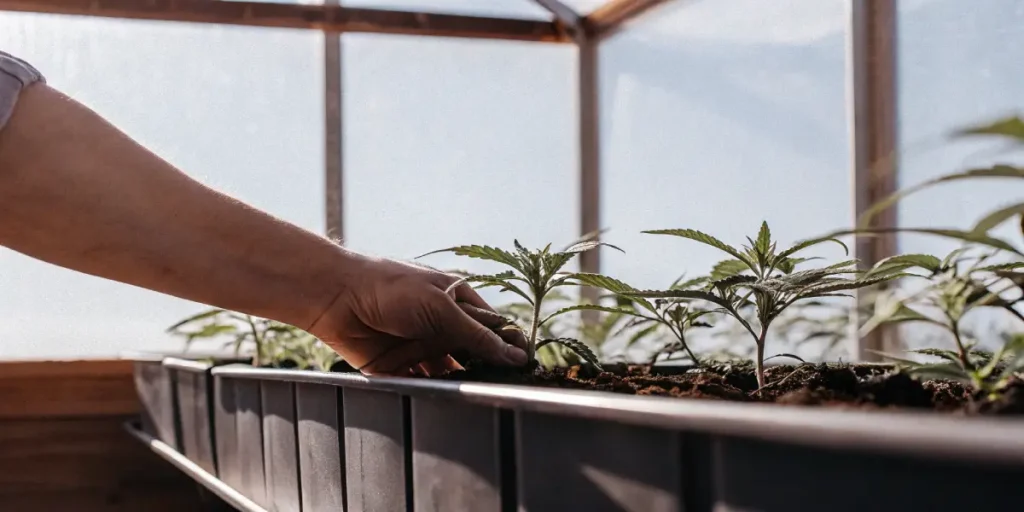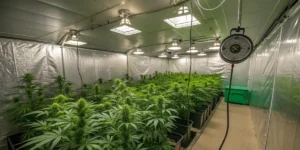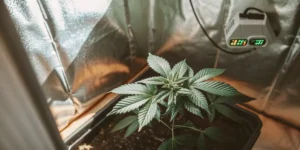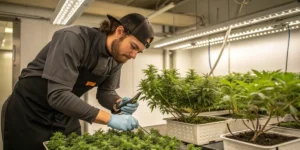When it comes to growing autoflower cannabis, getting the water schedule right can make a big difference. Autoflowers are unique because they automatically switch from the vegetative stage to the flowering stage without relying on light cycles. This means your autoflower water schedule needs to be on point to support their rapid growth.
One of the best water schedules for autoflower cannabis involves observing your plants regularly. Look at the leaves and soil to gauge water needs. A good rule of thumb is to water when the top inch of soil feels dry. This usually means watering every two to three days, but it can vary based on factors like humidity and soil type.
Take, for example, the popular Northern Lights strain from Global Green Genetics. This strain thrives with a consistent watering schedule and could be a good option for beginners. By sticking to a schedule, you’ll help ensure your plants get the nourishment they need without drowning them.
How Often to Water Autoflower Plants Indoors
Indoor growing offers more control over the environment but requires attention to detail. The frequency of watering your indoor autoflowers depends on several factors, such as the size of the pots, the growing medium, and the ambient conditions. Generally, smaller pots will dry out faster, necessitating more frequent watering.
Utilize techniques like the “lift the pot” method. Gently lift your pot to feel the weight. If it’s light, it’s time to water. This tactile technique works well for strains like Blue Dream from Global Green Genetics, which require consistent moisture levels. Adjust your watering schedule based on the plant’s needs rather than a fixed timeline.
In addition to pot size and growing medium, the type of lighting you use can also influence how often to water autoflower plants indoors. Stronger lights may increase evaporation, requiring you to adjust your autoflower water schedule accordingly. Monitoring your indoor climate, including temperature and humidity, can further refine your watering strategy.
Another aspect to consider is the stage of growth your plants are in. Young seedlings generally require less water compared to mature plants. As your autoflowers transition from vegetative to flowering stages, their water needs might change, emphasizing the importance of adapting your schedule to their developmental phase.
Ideal Watering Times for Autoflower Strains
Choosing the right time to water your autoflowers can impact their health and yield. Morning is often the best time to water. Doing so allows the plant to absorb moisture throughout the day. This helps prevent issues like root rot and nutrient burn, which can occur if water sits in the soil overnight.
Another factor to consider is the plant’s growth stage. During the vegetative stage, your plants need more water than in the flowering stage. For instance, the Amnesia Haze strain from Global Green Genetics benefits from reduced watering as it approaches harvest time. Adjusting your watering times and amounts ensures you accommodate these shifts effectively.
Knowing the ideal watering times for autoflower strains helps in maintaining a balanced environment for your plants. Watering in the morning aligns with natural cycles and provides ample time for the soil to dry, reducing the risk of fungal infections. This approach is particularly beneficial during the humid months when evaporation is slower.
For those managing multiple strains, keeping a journal of watering schedules and plant responses can be invaluable. Documenting how different strains like Amnesia Haze react to watering times can help fine-tune your practices. Such records allow you to identify patterns and make informed adjustments to your autoflower water schedule.
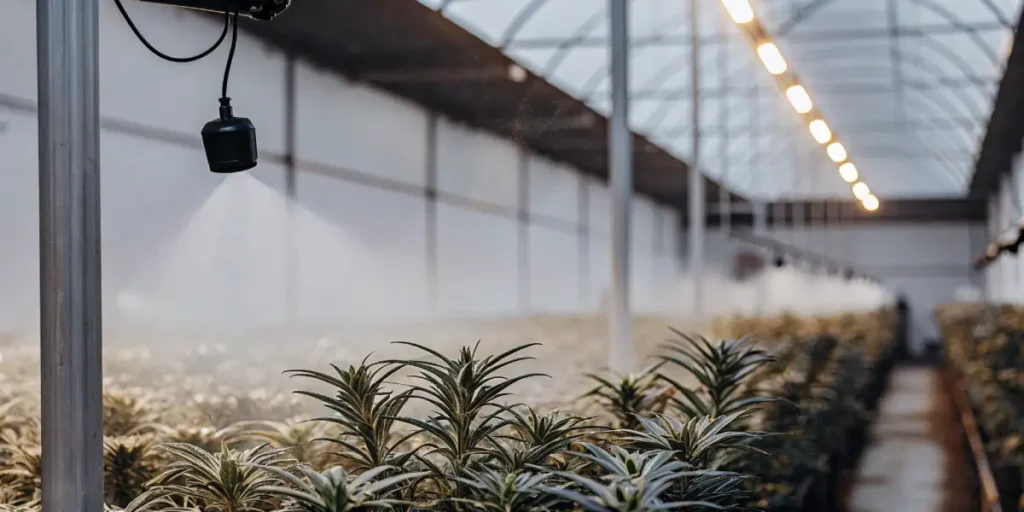
Watering Frequency for Outdoor Autoflowers
Growing autoflowers outdoors introduces variables like weather conditions and soil type. These factors can greatly influence your watering schedule. Outdoor autoflowers will generally require less frequent watering due to natural rainfall, but drought conditions can change that necessity.
Observing the weather forecast can guide your watering decisions. If rain is expected, you might skip a watering session. Conversely, during dry spells, you may need to increase the frequency. Outdoor growers of strains like Gorilla Glue 4 from Global Green Genetics find success by adapting to these natural cues.
Establishing a watering frequency for outdoor autoflowers requires an knowing of your local climate. Consistent monitoring of rainfall and temperature can help prevent overwatering, which is just as detrimental as underwatering. A moisture meter can be a valuable tool in assessing soil hydration levels accurately.
Incorporating mulch around your plants can help retain soil moisture, reducing the need for frequent watering. This practice is particularly useful during the hot summer months when evaporation rates are high. By creating a buffer against extreme environmental conditions, you ensure a more stable autoflower water schedule.
Adjusting Water pH for Autoflower Growth
Water pH plays a crucial role in the absorption of nutrients. Autoflowers generally prefer a pH range of 6.0 to 7.0. Testing your water’s pH regularly and making adjustments can prevent nutrient lockout, where plants can’t absorb essential nutrients despite their presence in the soil.
Simple pH testing kits are available and easy to use. If you find your water’s pH is too high or too low, pH up or pH down solutions can help balance it out. For example, strains like White Widow from Global Green Genetics show improved growth when pH levels are properly managed.
Adjusting water pH for autoflower growth is not a one-time task but an ongoing process. Regular checks and adjustments ensure that nutrient uptake is optimized, leading to healthier plants. This is particularly important in areas with hard water, where pH levels can fluctuate significantly.
For growers using tap water, investing in a filtration system can help maintain consistent pH levels. This stability supports a best water schedule for autoflower cannabis by ensuring that nutrient availability remains constant. Over time, maintaining the correct pH balance can significantly enhance the quality and yield of your harvest.
Common Mistakes in Autoflower Watering
Overwatering is a common pitfall for new growers. It can lead to root rot and other issues that stunt plant growth. To avoid this, always check the soil moisture before watering. The top inch should be dry. This simple check can prevent many problems.
Another mistake is using water that’s too cold or too hot. Room temperature water is ideal, as extreme temperatures can shock the plants. When watering strains like Sour Diesel from Global Green Genetics, ensure the water temperature is just right to keep them thriving.
Avoiding common mistakes in your autoflower water schedule can be the difference between a good and a great harvest. Besides overwatering and temperature issues, failing to adjust the schedule based on plant size and growth stage can also hinder development. Paying attention to these nuances helps refine your approach.
Another mistake is not considering the quality of water. Chlorine and other chemicals in tap water can affect plant health, so letting water sit overnight or using a filter can mitigate these effects. Knowing these potential pitfalls makes your watering practices more effective and supports robust plant growth.
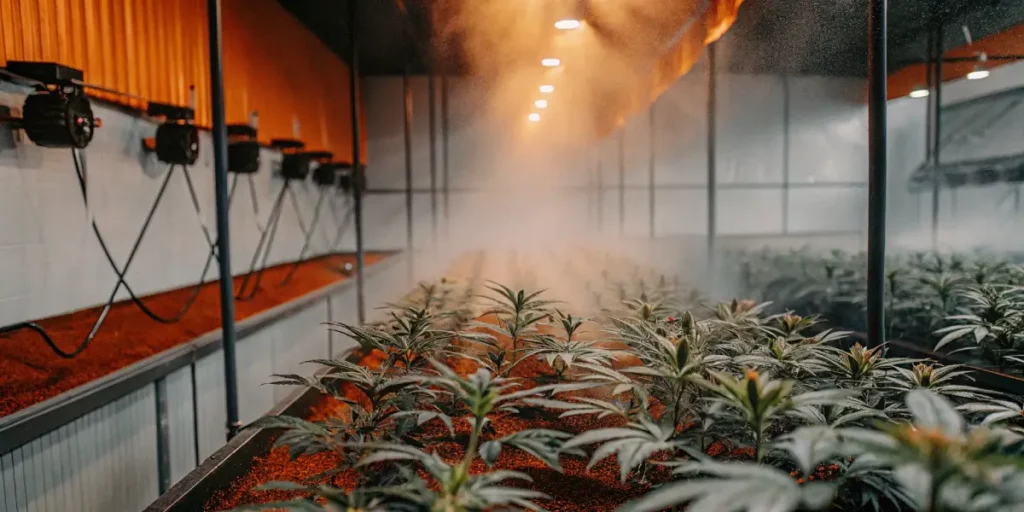
Autoflower Watering FAQs
How does pot size affect the autoflower water schedule?
Pot size has a direct impact on how often you need to water your autoflowers. Smaller pots dry out faster, requiring more frequent watering. Larger pots retain moisture longer, so they may not need watering as often. This is because smaller pots have less soil volume to hold water, leading to quicker evaporation.
Choosing the right pot size for your strain, such as the versatile Lemon Haze from Global Green Genetics, ensures you provide adequate water without overdoing it. Balance is key, and monitoring the soil moisture helps you adapt to the needs of your plants effectively.
Besides to influencing watering frequency, pot size can also impact root development. Smaller pots may restrict root growth, leading to a need for more frequent watering and nutrient supply. Conversely, larger pots can support more extensive root systems, allowing for a more stable autoflower water schedule.
When deciding on pot size, consider the final size and yield expectations for your chosen strain. Some growers experiment with different pot sizes for the same strain to see how it affects growth and water needs. This hands-on approach can provide valuable insights into optimizing your water schedule for best results.
What are signs that I need to adjust my autoflower water schedule?
Watch for signs like yellowing leaves, which can indicate overwatering or underwatering. Curling leaves may also suggest watering issues. If the soil is consistently wet, reduce watering frequency. Conversely, if it’s dry and crusty, increase the amount or frequency.
Paying attention to these signs when growing a strain like Critical Mass from Global Green Genetics can guide you in making necessary adjustments. Over time, you’ll develop a keen sense of your plants’ needs, allowing for a more intuitive watering schedule.
Another indicator that your autoflower water schedule may need adjusting is the wilting of plants. While wilting can result from lack of water, overwatering can also cause this symptom as it suffocates the roots. Observing plant behavior closely can help pinpoint the root cause and adjust your watering practices accordingly.
Soil texture is another clue. If the soil becomes compacted, it may indicate overwatering, whereas overly loose soil could suggest insufficient moisture. Regularly assessing both plant appearance and soil condition provides a comprehensive view for fine-tuning your water schedule effectively.
Is rainwater suitable for autoflower plants?
Rainwater is generally excellent for autoflower plants because it is free of chemicals often found in tap water. However, it’s important to ensure your rainwater collection system is clean to prevent contaminants. Using rainwater can be an eco-friendly option that supports healthy growth.
If you’re growing a strain like Jack Herer from Global Green Genetics, rainwater can provide the natural nutrients your plants crave. Just be mindful of pollution levels in your area, as rainwater can sometimes carry airborne pollutants that could affect plant health.
Collecting rainwater for your autoflower plants not only aligns with sustainable practices but can also enhance the effectiveness of your autoflower water schedule. Without the additives found in tap water, rainwater allows for more efficient nutrient uptake, contributing to healthier plant development.
When using rainwater, consider the timing of collection and storage. Rainwater collected after prolonged dry periods may contain higher levels of dust and pollutants. Using a first-flush diverter in your collection system can help minimize these contaminants, ensuring cleaner water for your plants.
Can I use tap water for my autoflowers?
Tap water can be used for autoflowers, but it’s important to test it first. Chlorine and other chemicals present in tap water can be harmful. Letting the water sit out for 24 hours allows some of these chemicals to evaporate, making it safer for your plants.
Filtering tap water is another option to consider, especially when growing sensitive strains like Pineapple Express from Global Green Genetics. By ensuring your water is clean and chemical-free, you provide a healthier environment for your plants to thrive.
Using tap water effectively in your autoflower water schedule involves understanding the specific quality of your local supply. Testing for pH levels and chemical content can guide adjustments, ensuring your plants receive the best possible care and reducing the risk of nutrient lockout.
Some growers opt to mix tap water with rainwater or distilled water to balance mineral content. This approach can mitigate potential issues related to tap water quality, offering a more controlled environment for autoflower growth. Adapting your water sources based on plant response can enhance overall cultivation results.
How do environmental factors alter the autoflower water schedule?
Environmental factors like temperature and humidity significantly influence your watering schedule. High temperatures can cause soil to dry out faster, requiring more frequent watering. Conversely, high humidity can reduce the need for frequent watering.
Monitoring these factors helps you adjust your schedule to meet the needs of strains such as Green Crack from Global Green Genetics. By tailoring your approach to the environment, you ensure your autoflowers receive the proper care for optimal growth.
Seasonal changes also play a role in altering your autoflower water schedule. During the summer, increased sunlight and heat may necessitate additional watering sessions, while the cooler, more humid months might allow for less frequent watering. Understanding these dynamics ensures your plants remain well-hydrated year-round.
For indoor growers, the use of climate control systems can help stabilize these environmental factors, offering more predictability in your watering schedule. However, even with controlled environments, regular assessments and adjustments are crucial to accommodate any subtle shifts in plant needs or room conditions.

